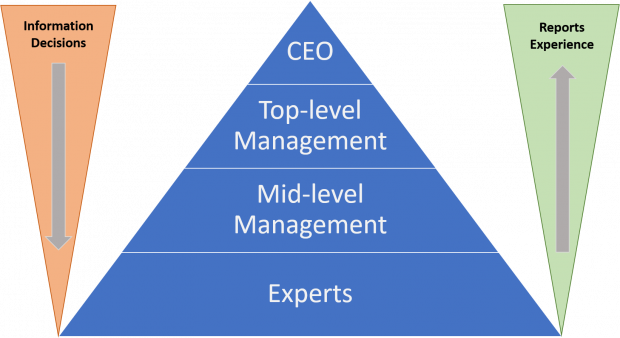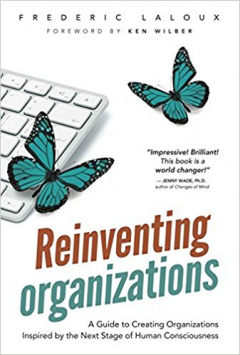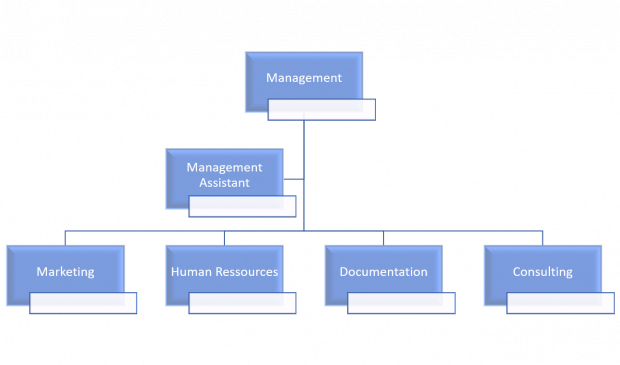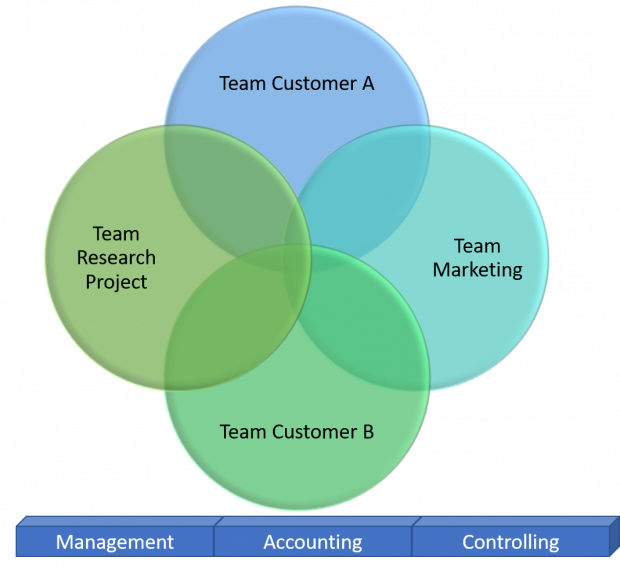Working in self-organizing teams. Or: how we get rid of management
Today's world is VUCA : volatile, uncertain, complex, and ambiguous. Companies are facing complex challenges such as Industry 4.0 and the Internet of Things. Those who do not respond fast, may be driven out of the market.
At the same time, there is a shortage of skilled employees. Plus, employees have different priorities. In the past, most chose their jobs based on the size of the salary. Today, they prefer a good working atmosphere and flexible working hours.
Hierarchical organizations in an increasingly agile world
In traditional and hierarchical organizations, it can take a long time before a decision is made. Few have the authority to make decisions, and those few may not have the required expertise. Therefore, they must get advice from subordinate experts. These experts work at different hierarchy levels, which means that the communication has to run through all these levels and must adhere to specific communication procedures and structures, such as task forces, workings groups, or committees. These procedures may affect the quality of the decision dramatically.
At the same time, important information is communicated from top to bottom while work results are formally reported from bottom to top. The different departments compete for budgets and resources instead of working together on the strategic goals of the company.
All this reduces efficiency and innovation, often proportionally to the company size. Employees feel stressed and demotivated.
New Forms of Organizations and Processes
In response to these challenges, new forms of organizations and processes have emerged over the past 15 years. They are based on the idea that self-determined work and participation lead to higher quality and more innovation.
Among other things, the new forms include:
- Sociocracy, which means self-governing organization. See https://en.wikipedia.org/wiki/Sociocracy
- Holocracy, a self-management system for agile companies, see https://www.holacracy.org
- Agile project management, for example, Scrum, see https://www.scrumalliance.org/
- The consent principle, see https://www.sociocracy.info/consensus-consent-objections/
- Transformational leadership, see https://en.wikipedia.org/wiki/Transformational_leadership
For us, the book Reinventing organizations by Frederic Laloux was an eye-opener. See http://www.reinventingorganizations.com/.
The main idea of the new forms is to replace a rigid hierarchy with self-managing teams. Teams organize themselves and, in addition to their specialist work, take on tasks that are usually done by management, such as recruitment, contract negotiations, and budget controlling.
The teams coordinate their work in regular meetings. They have common goals that all team members have agreed on. Team members with the necessary expertise make decisions that concern the work of the team. The teams decide by consent, which means that proposed solutions and decisions will only be rejected if team members have serious arguments against them. That means that not all team members need to agree before a decision is made.
Self-managing organizations share responsibility and every employee participates in decisions. The teams are interlinked so that one employee can work in several teams.
And what does it look like at parson?
In 2016, we decided to become a self-managing organization. One major reason for this decision was that we had been growing fast. The previous, rather family-like business structures were no longer suitable for the increasing number of employees and the distribution over several locations.
Since then, we have been developing the various organizational areas and processes. Step by step, we are changing the organization. Each step is defined by the pain that inefficient or non-transparent processes cause. We make major decisions together at staff meetings, which we hold several times a year. Our corporate culture is based on knowledge exchange and transparency. That also means that we discuss business figures and how we deal with mistakes.
Organizational forms
We have introduced the following organizational forms:
- Self-managing teams per client or project. The teams organize the project work, sales, recruitment, and budget control at their own responsibility.
- Supporting functions, such as commercial management, accounting, and controlling. They carry out tasks that help the organization to function but do not deal with topics related to our business of technical communication.
- Communities of Practice that employees use to exchange knowledge about technical communication, technology or project management.
Processes for self-management and participation
So far, we have standardized the following processes:
- Transparent project management via a web-based tool
- Coaching to assure quality and knowledge transfer between teams
- Consent principle for decisions
- Job postings by teams
- Recruitment and mentoring processes
- Knowledge management
The path to a self-managing organization is long and challenging. The change affects all business processes and requires us to rethink at all levels. Not everyone is happy with the transformation right away. In addition to business processes, we are adjusting the IT infrastructure: Transparency requires access rights. For consulting and joint decision-making we need a platform that everyone has access to. But all this work is worth it, because it leads to more satisfaction at work, more self-determination, and a future-proof organization.
The article is based on the presentation of Ulrike Parson and Jonas Wäckerle at the tekom spring conference 2018. Ulrike Parson and Marion Knebel will present this topic at the tekom annual conference 2018 in Stuttgart again.




